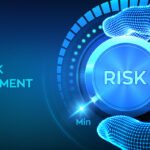A comprehensive risk assessment is a vital process in identifying and managing risks associated with an organization’s assets, processes, and systems. It involves a series of well-defined steps to ensure a thorough evaluation of potential threats and vulnerabilities.
Here are the key steps in conducting a risk assessment:
1. Prepare for Assessment:
- Scope Definition: Clearly define the scope of the assessment, which includes specifying the assets, systems, or processes to be assessed.
- Techniques and Resources: Determine the assessment techniques, tools, records, personnel, schedule, and other resources required for the assessment.
- Threat Landscape Consideration: While not explicitly a part of the NIST 800-30 framework, it’s essential to consider the current threat landscape to understand the evolving nature of threats.
2. Conduct Assessment:
- Identify Threat Sources and Events:
Identify all reasonable threat sources, events, and actors that could potentially pose a risk to the assessed assets or systems. - Identify Vulnerabilities and Predisposing Conditions:
Identify vulnerabilities within the scope of the assessment. Often, vulnerabilities and associated threats are paired for a clear understanding. For example, a threat actor with lock-picking tools paired with an exterior door having a substandard lock core. - Determine Likelihood of Occurrence:
Assess and determine the likelihood of each specific threat scenario occurring. This often involves estimations due to a lack of sufficient data for precise probability calculations. - Determine Magnitude of Impact:
Evaluate and express the impact of potential risks in qualitative terms, describing their effects on business operations. Alternatively, quantitative terms may be used, including response and recovery cost assessments. - Determine Risk:
Calculate the risk associated with each threat scenario using the formula:
Risk = Impact × Probability × Asset Value. This quantification provides a clear understanding of the risk’s severity.
3. Communicate Results:
- Tabulate Results: Compile and document the results of the risk assessment as determined during the assessment process.
- Stakeholder Communication: Communicate the results to various stakeholders within the organization. Develop results in different formats tailored to specific audiences, such as an executive summary for executives and detailed charts for lower management and remediation teams.
4. Maintain Assessment:
- Risk Monitoring: Implement a risk monitoring process where the risk manager periodically reviews and re-evaluates the assets, systems, or processes to identify any changes in threats, threat actors, vulnerabilities, impact, or the probability of occurrence. This ongoing monitoring ensures that risk assessments remain current and relevant.
The risk assessment process is an iterative one, and it may need to be repeated at regular intervals or in response to changes within the organization or external factors. It serves as a critical tool for proactive risk management, allowing organizations to make informed decisions to mitigate and manage potential risks effectively.



